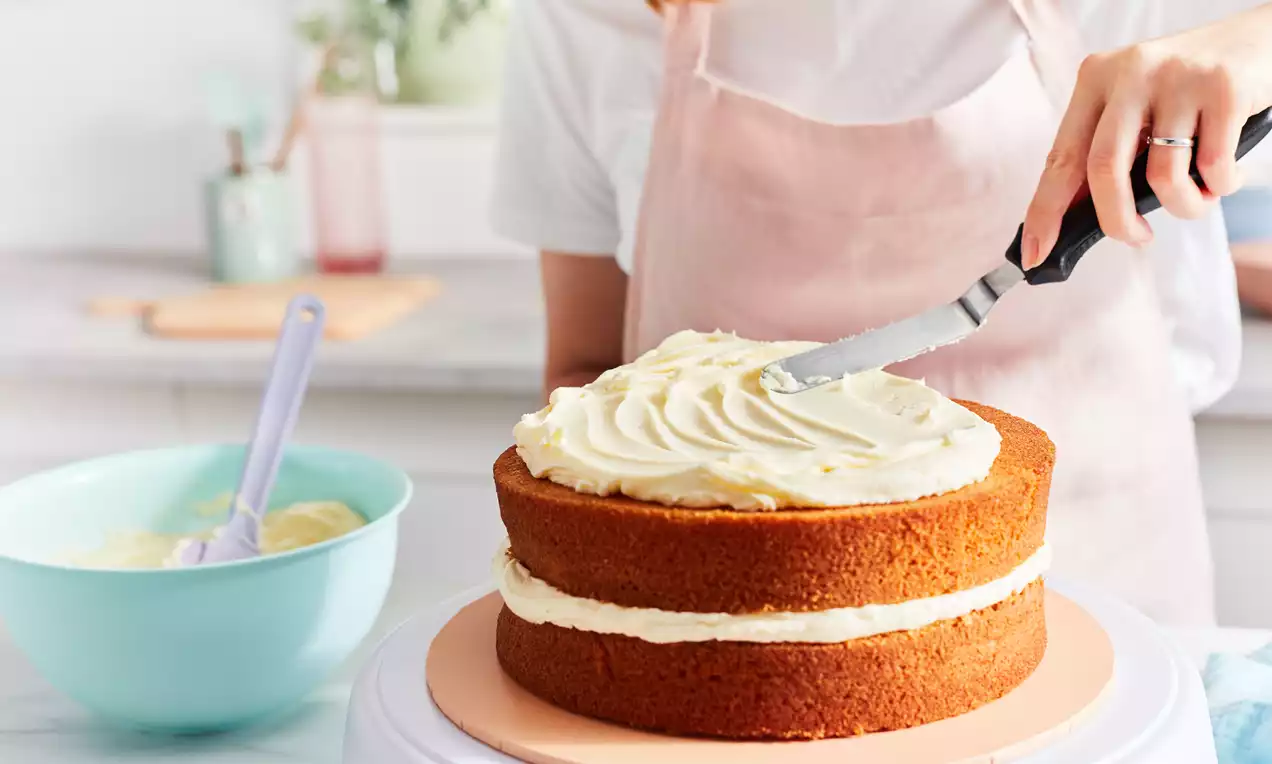
Icing a Cake
Baking a delicious cake isn’t just about making your sponge. To create that wow factor and add an extra taste sensation, your icing is super important too. So, which type of icing is best and how do you ice a cake?
Here we’ll run through the different types of icing, how to do it and the tools you’ll need.
There are different types of cake icing, depending on the look you want to get. They include:
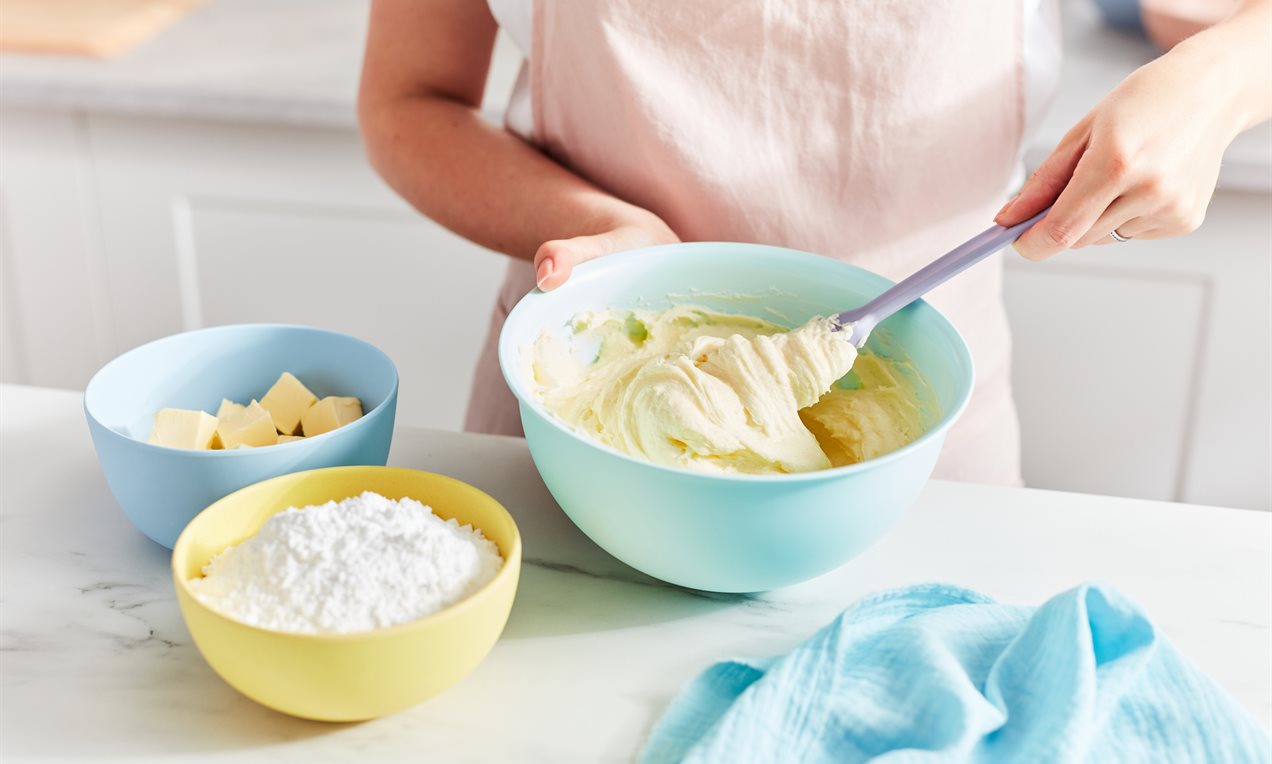
Softer and more spreadable than most icing, buttercream is perfect for a sweet taste and a little flexibility. It can also be used as filling inside cakes as well as decoration.
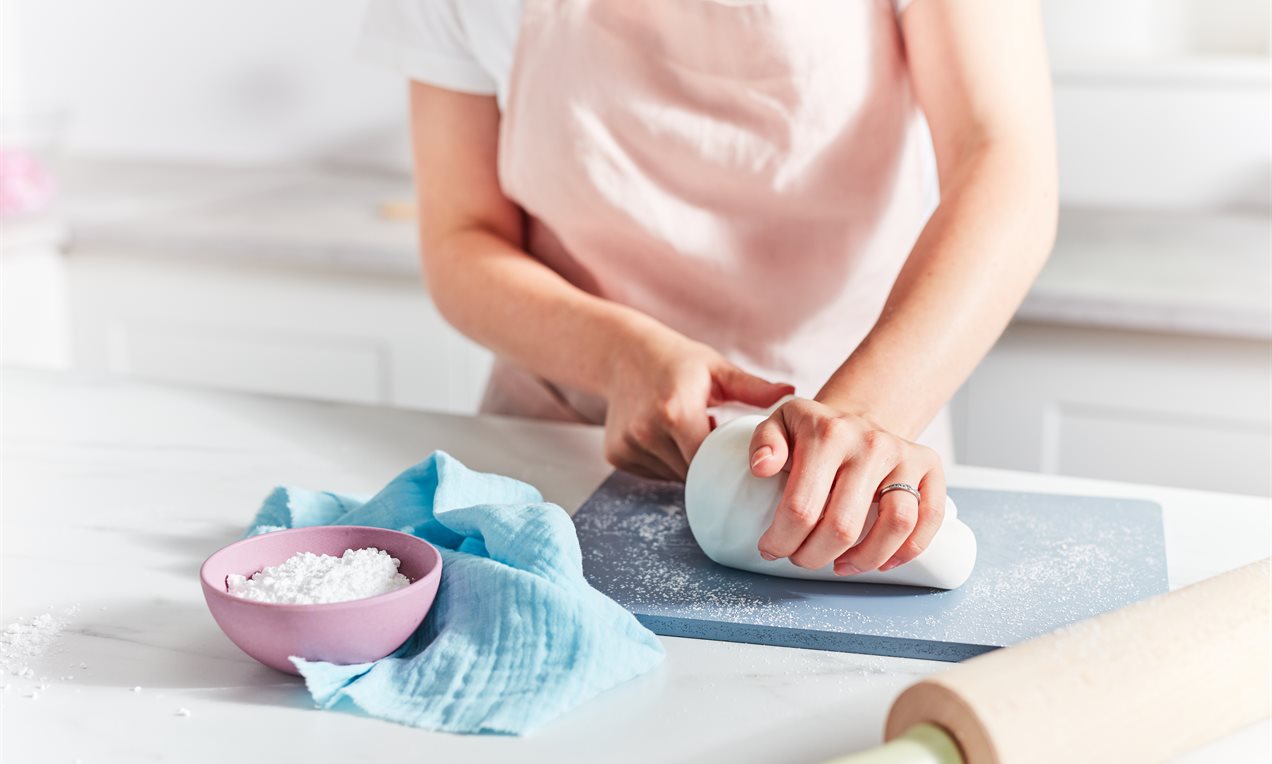
A heavy frosting that can be easily sculpted, it’s often used for celebration cakes like our Iced Birthday Cake.
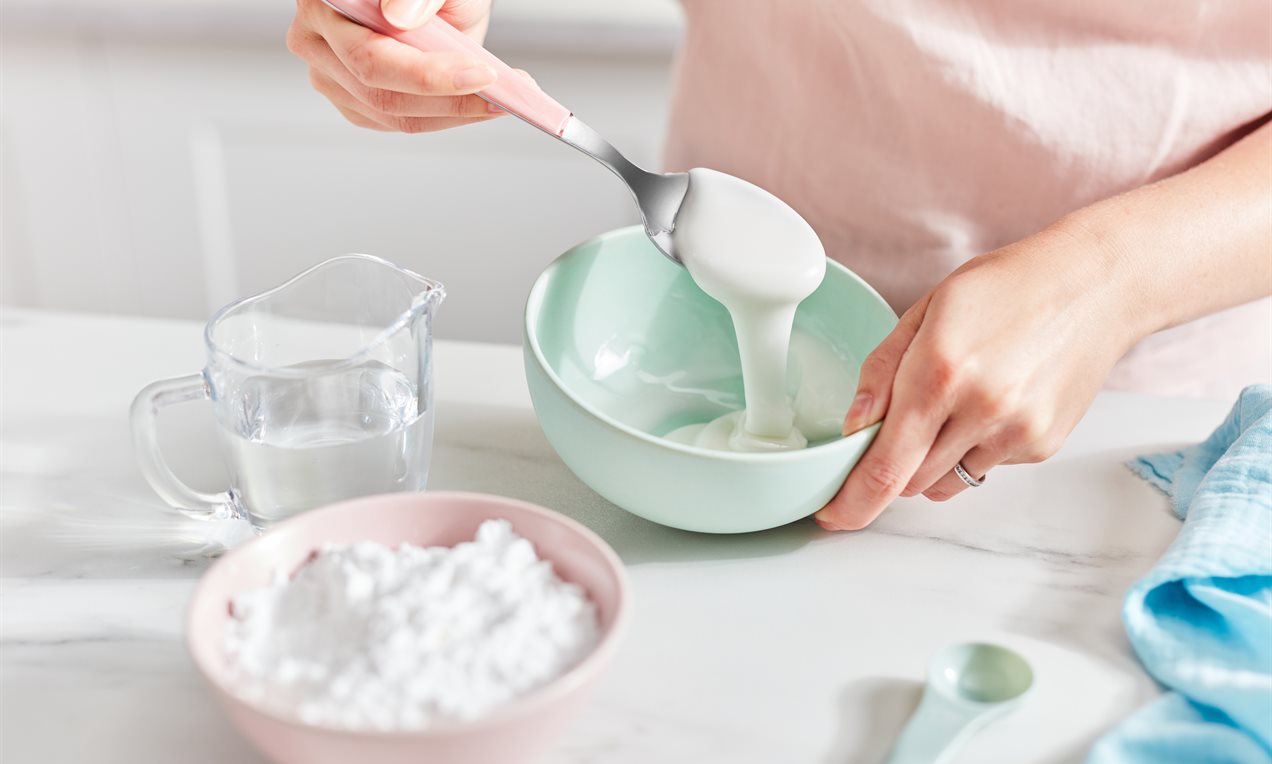
This is smooth, runny and glossy and is ideal for fairy cakes, biscuits and cookies. We use it in our Lemon Drizzle Loaf.
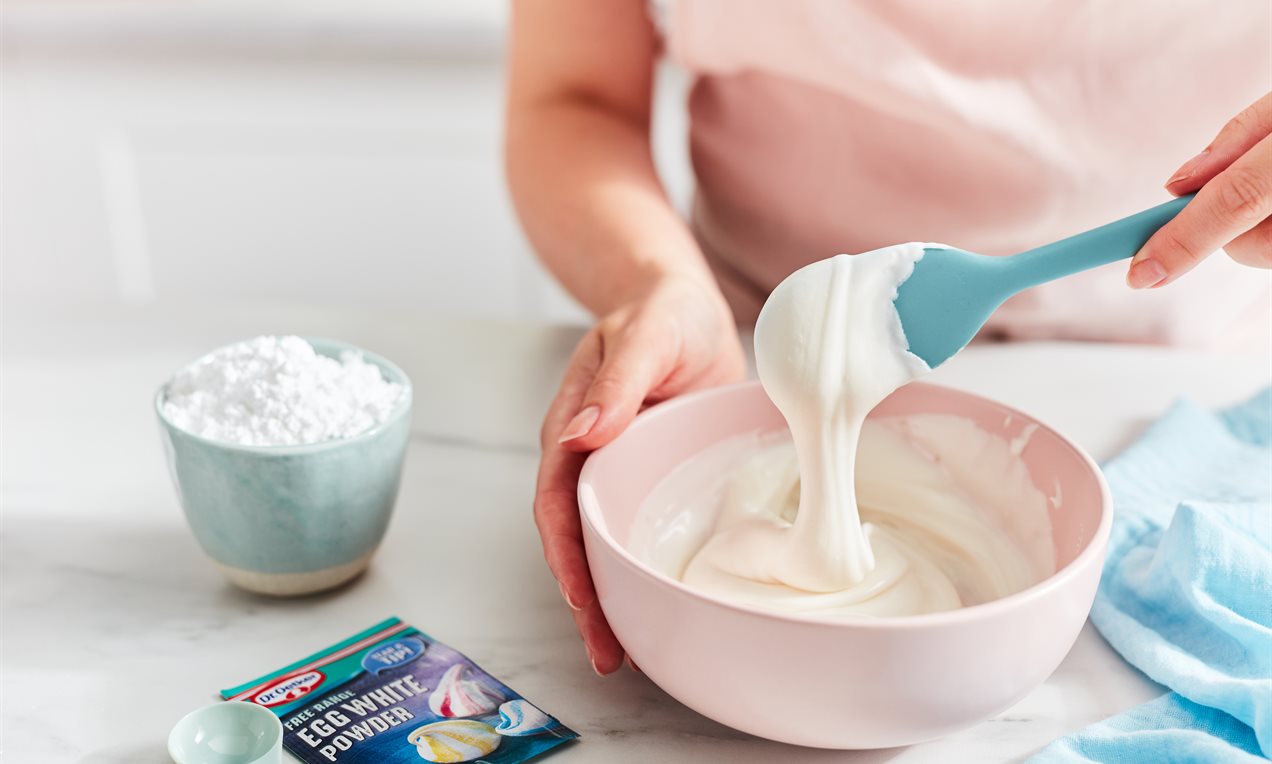
It is a pure white and fluid paste that solidifies into a hard outer shell when it dries. It’s traditionally used to cover and decorate fruit cakes, although we like to use it on our Bauble Biscuits.
Glace icing is easy to use to decorate your cake. Once you’ve sieved icing sugar and mixed it with a liquid (like lemon juice), you’ll have a pourable icing consistency. You can then pour it over your cake and smooth it out with your palette knife.
Things can get a little more complicated when it comes to covering a cake in buttercream or fondant icing, however. Here’s how to do it:
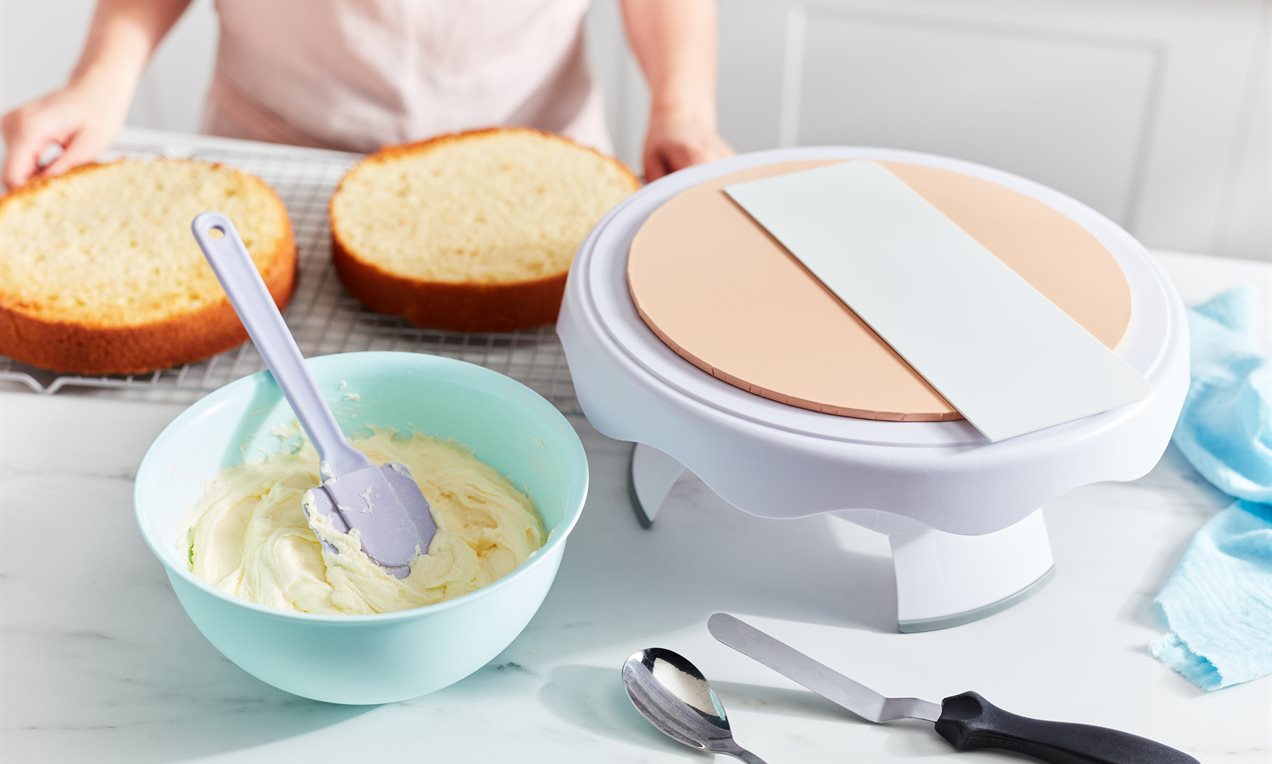
To cover your cake in buttercream, you’ll need the following equipment:
• Large spoon or ladle
• Spatula or palette knife
• Turntable if you have one
Then do the following:
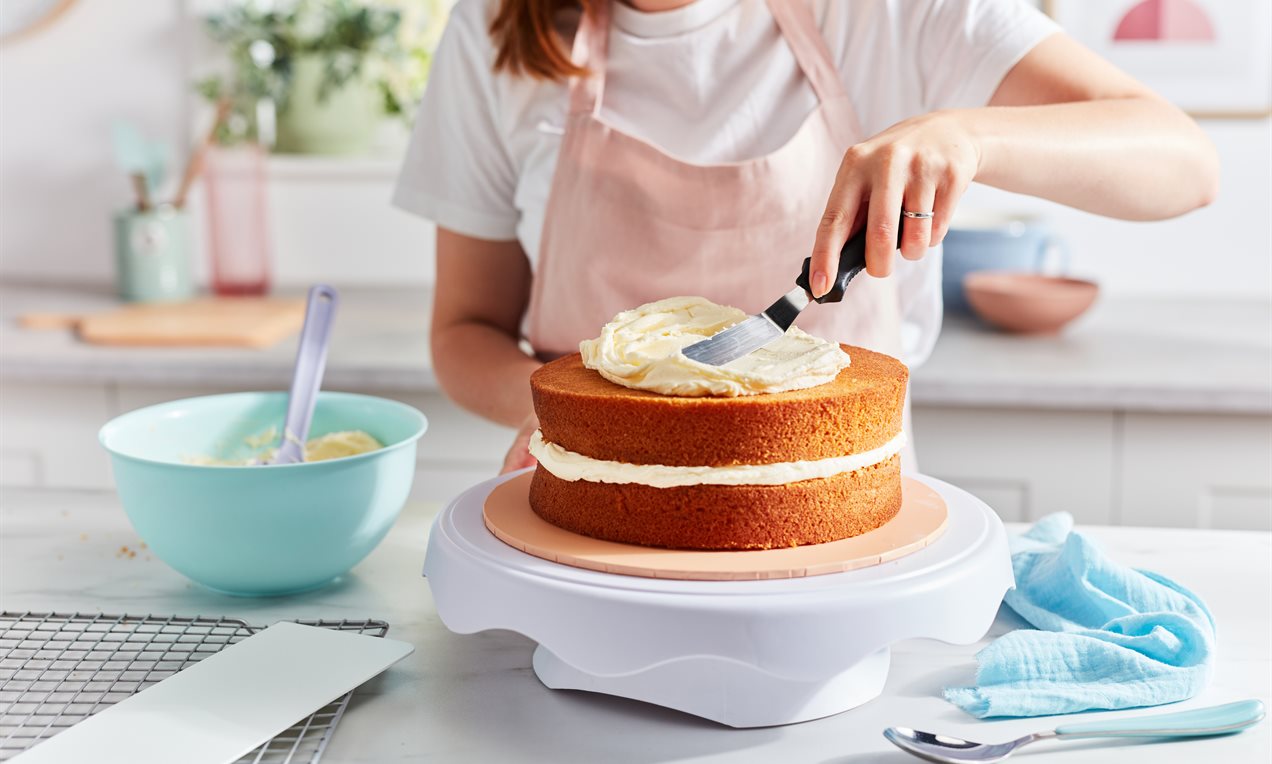
Once your sponge has cooled, spoon a large dollop of softened buttercream over the top. Remember, it needs to be softened but not runny or melting. Use a spatula or palette knife to smooth it right to the edge.
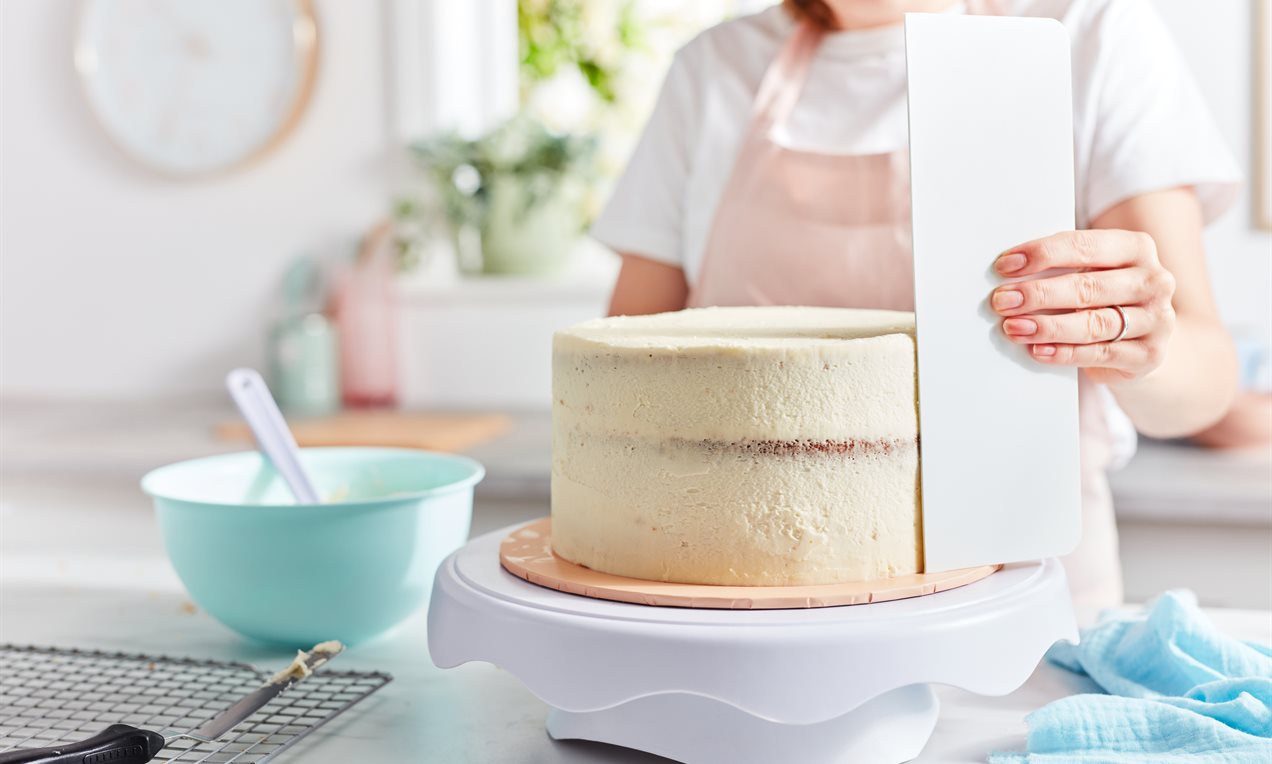
Again use a spatula or palette knife to smooth smaller dollops of buttercream over the sides of the cake in sections.
To get a smooth finish, hold a palette knife flat at the edge of the cake furthest away from you and drag it towards you. Hold your palette knife in one hand and at a 90-degree angle to the cake. Gently spin the cake in your other hand to smooth the buttercream. If you have a turntable, it will be much easier to do this but you can do it without. It will just take a little longer.
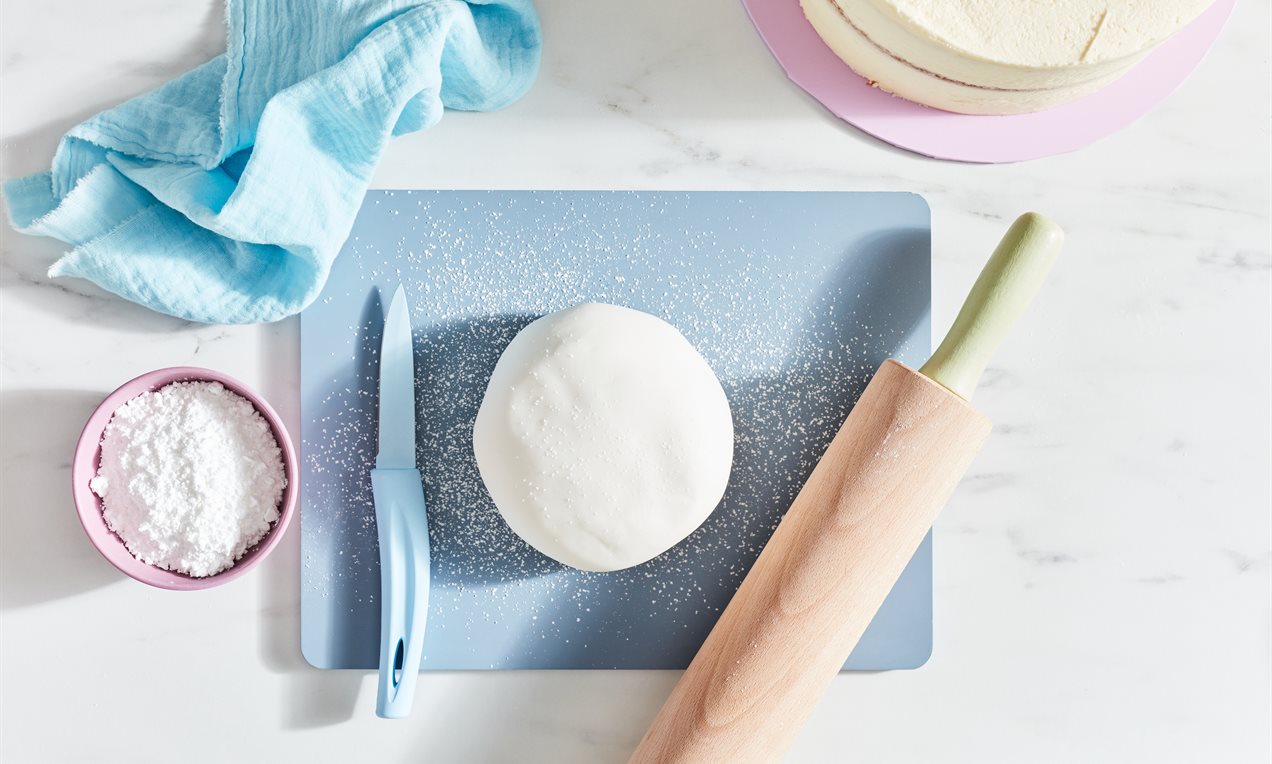
You’ll need:
• Rolling pin
• Palette knife
• Cake smoothers
Before you cover your cake in fondant icing, you’ll need to first cover it in buttercream. It helps the fondant stick to the cake and smooths out any bumps or imperfections on the cake’s surface. Once you’ve done so, leave it to firm in the fridge for half an hour. Then you’ll need to:
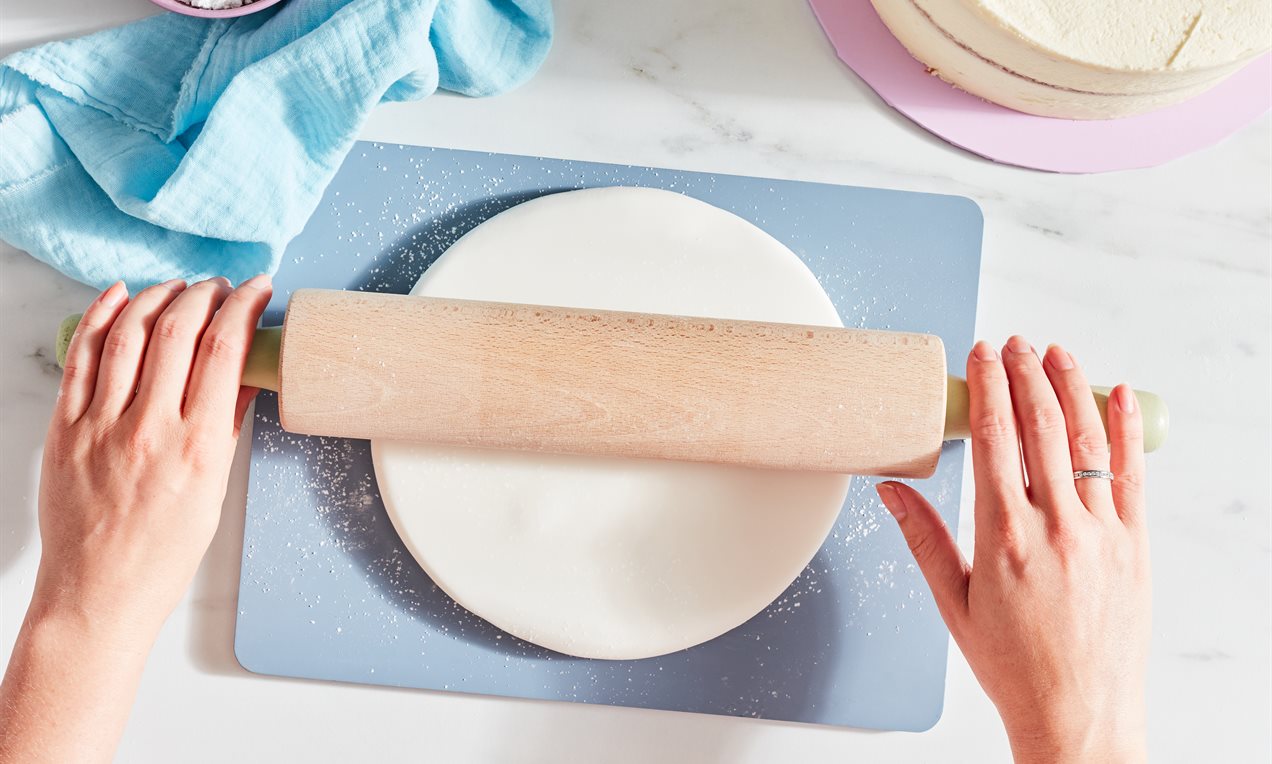
Dust your work surface with cornflour or icing sugar. Knead fondant icing on the surface for a couple of minutes. Alternatively you can put it in the microwave for 10 seconds. Flip the smooth side to the top, then roll it out to fit the cake.
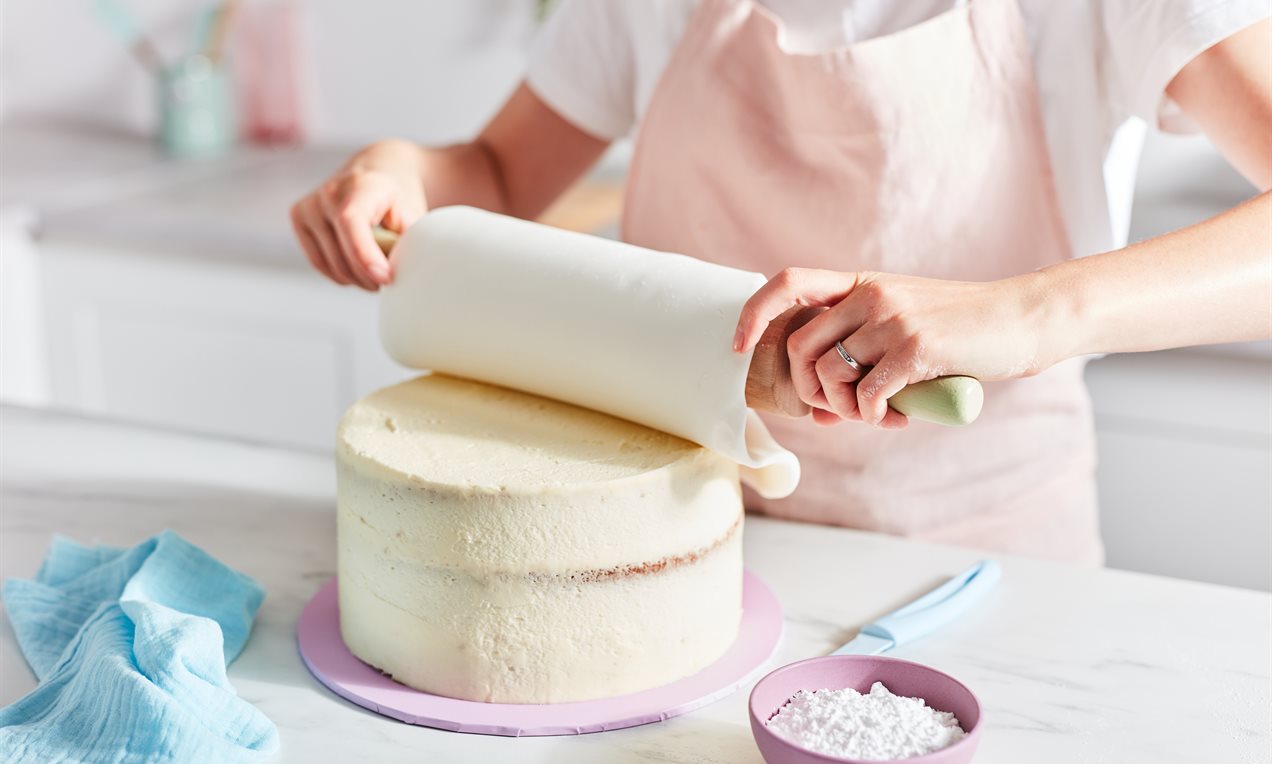
Lift the icing using your hands or a rolling pin and drape it over the top of the cake. You’ll then need to use cake smoothers to smooth the fondant. Push out any air bubbles and creases beginning at the top then working down the sides.
Use a palette knife to cut away any excess icing.
Use two cake smoothers together to polish and create the perfect finish.
Once your cake is perfectly iced, you can get decorating. How you choose to do so is completely up to you, but we love edible sprinkles, marshmallows and some extra colourful icing.
How about some Chocolate Dinos for the T-Rex loving four year old in your life? Or what about Chocolate Unicorns for the Disney obsessed princess on her birthday? Or even someChristmas Reindeer Sprinkles for some festive fun in the lead up to Christmas?
You can also add some colourful icing to make it pop, whether Gold Decorating Icing or Rainbow Decorating Icing.
Can you freeze a cake with icing?
You can’t freeze and defrost a fondant covered cake as the moisture in the freezer makes the fondant sticky. Buttercream does freezes very well on the other hand.
How long will a sponge cake last covered in icing?
Once your sponge cake is covered in icing, it will last for around four to five days. This is because the icing acts as a barrier between the cake, allowing less air to get to the sponge.
Should I refrigerate a cake before icing?
You can put your cake in the fridge for at least two hours or overnight before icing. This will make sure it’s easier to manipulate and level. You don’t have to, however. Just make sure it’s cooled to room temperature before you begin icing.
What is the difference between flower paste and fondant paste?
Flower paste has extra gum tragacanth in the recipe which sets the paste firm and enables the paste to be rolled out very thinly and hold its shape without ripping to achieve delicate shapes like flower petals. Sugar paste (sometimes referred to as fondant paste) is what we refer to as 'Ready to Roll' icing. This is a block of sugar paste that can be rolled out to cover cakes or to create simple models. This will not set as hard as flower paste, and you will not be able to roll as thin.
For more tips and tricks, check out our handy guides such as How to Make Self-Raising Flour andHow to Use Food Colouring in Baking. A little knowledge makes a big difference!